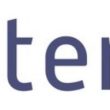Journey to FirstNet a story of remarkable persistence, refusal to succumb to doubters
But overcoming doubts has been a hallmark of this public-safety broadband initiative, even before the word “FirstNet” was created by law in 2012. After Morgan O’Brien made his proposal at IWCE 2006 for the allocation of 30 MHz of broadband spectrum to public safety in the 700 MHz to build a dedicated LTE network for first responders, the naysayers offered many legitimate arguments, noting that O’Brien would:
- Never get the FCC to allocate broadband spectrum to public safety;
- Never get the FCC to reallocate public-safety wideband spectrum to broadband;
- Never get the FCC to move quickly on the notion of a public-safety 700 MHz network;
- Never get public safety to accept LTE, which was a cutting-edge, data-only standard at the time and based on Internet Protocol (IP), which many first-responder agencies did not trust at the time; and
- Never get anyone to make a qualifying bid on the D Block spectrum in 2008.
Although O’Brien, McEwen and the FCC’s newly formed Public Safety Spectrum Trust (PSST) overcame the first three items, the FCC’s D Block auction failed in 2008.
Soon after, many in public safety feared that the 10 MHz of D Block spectrum simply would be auctioned commercially, instead of being paired with the PSST airwaves to establish a 20 MHz block to support first-responder use. Concerns at the time included the fact that public safety would:
- Never get all of its factions to agree on an advocacy—public safety doesn’t use the word “lobby”—position with Congress;
- Never get any carriers to support the public-safety need for the spectrum;
- Never accumulate the political capital outside of public safety needed to get Congress to act;
- Never convince House Republicans to support giving the D Block to public safety instead of conducting a commercial auction;
- Never get any kind of legislation passed by a very partisan, dysfunctional Congress;
- Never get the D Block included in proposed omnibus legislation; and
- Never get any meaningful funding, even if the D Block spectrum was allocated to public safety.
Astonishingly, a newly formed organization known as the Public Safety Alliance led a successful advocacy campaign on Capitol Hill, with notable support from nationwide carriers Verizon and AT&T, as well as the “Big 7” state and local government associations.
In February 2012, Congress created FirstNet as part of a massive piece of legislation, allocating the D Block and the PSST spectrum to the fledgling organization to provide a 20 MHz spectrum base for a nationwide network. In addition, Congress earmarked $7 billion in future spectrum-auction proceeds to FirstNet.
Of course, creating an organization did not guarantee that a network would get built. Many doubters noted that FirstNet would:
- Never have a cohesive board with the members coming from very different commercial, government and public-safety backgrounds;
- Never be able to overcome early setbacks created by allegations, confusion and mistrust associated with the initial directions of the board;
- Never be able to build a nationwide network for $7 billion;
- Never build a meaningful public-safety network without additional funding from Congress;
- Never be self-sustaining, especially if coverage was provided to rural areas of the country;
- Never be able to complete the 40-step roadmap;
- Never issue an RFP that meets the lofty goals of its legislative mandate;
- Never get a bid from legitimate entities willing to build a public-safety-grade network and pay FirstNet; and
- Never will get federal-government support if Republicans control Congress and the White House, because FirstNet was created when Democrats controlled the White House and the Senate.
In addition, the Public Safety Communications Research (PSCR) led a parallel effort within the 3GPP standards body to get public-safety-specific functionalities included in the LTE standard—something many industry analysts thought would never happen in a carrier-dominated environment.
Amazingly, all of these “nevers” listed on the above bullet points have been overcome during the last decade, despite the incredible odds. Each bullet point represents a significant hurdle that had to be cleared, usually requiring considerable effort. If any of the bullet points listed were not addressed, there was a real risk that the public-safety broadband initiative would have been compromised in some way, if not unraveled entirely.
And, believe me, this list is a very short, extremely condensed version of what really happened.













